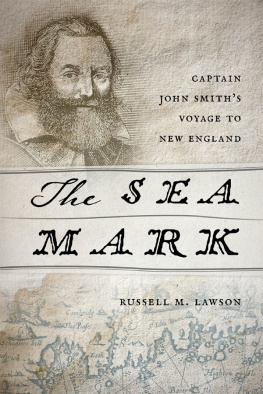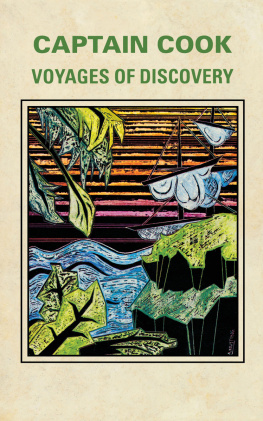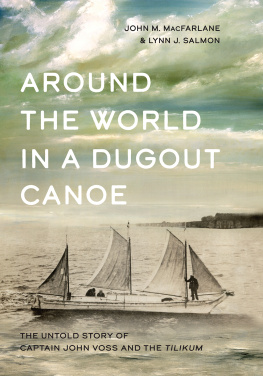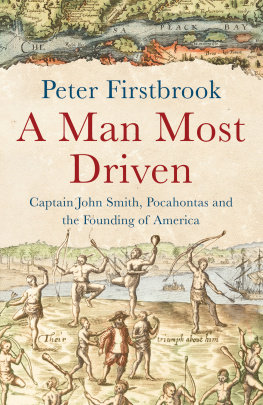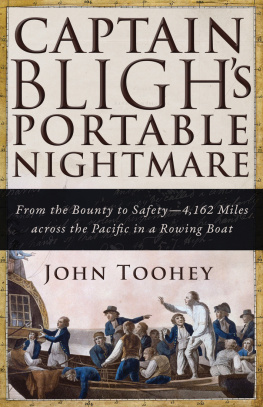Russell M. Lawson - The Sea Mark: Captain John Smiths Voyage to New England
Here you can read online Russell M. Lawson - The Sea Mark: Captain John Smiths Voyage to New England full text of the book (entire story) in english for free. Download pdf and epub, get meaning, cover and reviews about this ebook. year: 2015, publisher: University Press of New England, genre: History. Description of the work, (preface) as well as reviews are available. Best literature library LitArk.com created for fans of good reading and offers a wide selection of genres:
Romance novel
Science fiction
Adventure
Detective
Science
History
Home and family
Prose
Art
Politics
Computer
Non-fiction
Religion
Business
Children
Humor
Choose a favorite category and find really read worthwhile books. Enjoy immersion in the world of imagination, feel the emotions of the characters or learn something new for yourself, make an fascinating discovery.
- Book:The Sea Mark: Captain John Smiths Voyage to New England
- Author:
- Publisher:University Press of New England
- Genre:
- Year:2015
- Rating:3 / 5
- Favourites:Add to favourites
- Your mark:
- 60
- 1
- 2
- 3
- 4
- 5
The Sea Mark: Captain John Smiths Voyage to New England: summary, description and annotation
We offer to read an annotation, description, summary or preface (depends on what the author of the book "The Sea Mark: Captain John Smiths Voyage to New England" wrote himself). If you haven't found the necessary information about the book — write in the comments, we will try to find it.
The first complete narrative history of Captain John Smiths exploration of the New England coast
The Sea Mark: Captain John Smiths Voyage to New England — read online for free the complete book (whole text) full work
Below is the text of the book, divided by pages. System saving the place of the last page read, allows you to conveniently read the book "The Sea Mark: Captain John Smiths Voyage to New England" online for free, without having to search again every time where you left off. Put a bookmark, and you can go to the page where you finished reading at any time.
Font size:
Interval:
Bookmark:
ONE

The Sea Mark
It was a pleasant late summer day, the gentle zephyr coming off the water smelling fresh and the few clouds lazily wafting by. The suns heat upon the cold water created a haze that settled upon the sea, obscuring the distant shore. Nathaniel Hawthorne was in the second week of a visit to the Isles of Shoals, eight small islands off the coast of Maine and New Hampshire that in 1852 were becoming a place for tourists and vacationers and the curious. Hawthorne was fresh from writing a biography of his friend Franklin Pierce, the Democratic nominee for president; Pierce was to join Hawthorne at the Isles of Shoals for a brief time to enjoy the atmosphere of the sea. The islands were jagged rocks seemingly thrust from the ocean floor in the distant past. Few plants grew on the rocks, which were regularly skimmed by the ocean winds. The largest island, Appledore, had a hotel run by the former lighthouse keeper Thomas Laighton. His daughter, Celia Laighton Thaxter, and her husband, Levi Thaxter, lived on the island, as did a few fishermen and their families. Upon Hawthornes arrival on August 30, 1852, Levi Thaxter adopted him as a friend and the two men spent a fortnight exploring Appledore as well as some of the other islandsStar, White, Londoners, Smuttynose. Remarkable characters, past and present, fascinated Hawthorne, as did ghosts, of which the Isles of Shoals had plenty. Remains of the human and natural past surrounded the islanders, and Hawthorne.
After dinner on the first day, Thaxter and Hawthorne strolled about Appledore. They came to a monument of rude stones, on the highest point of the island, said to have been erected by Captain John Smith before the settlement at Plymouth. The monument intrigued Hawthorne, who investigated it further on another hot, still day, a little over a week

This photograph of Hawthorne was taken a few years after his visit to the Isles of Shoals in 1852. American Memory, Library of Congress.
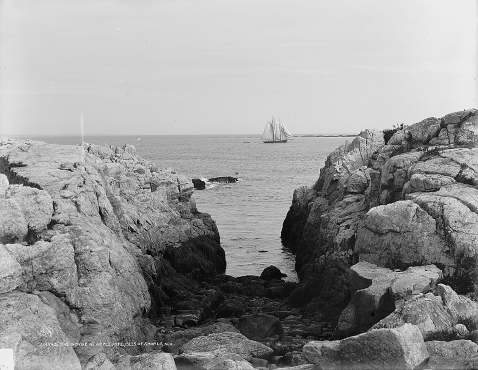
Appledore is the largest of the islands that make up the Isles of Shoals off the coast of Maine and New Hampshire. American Memory, Library of Congress.
There could be no better epitaph for John Smith than Hawthornes passing comment. What is fact and what is fiction in John Smiths life has been debated for four hundred years. A trained soldier and ad hoc sailor, a self-taught man with little schooling, nevertheless Smith wrote nine books between 1608 and 1631. He wove the themes of his booksadventure, action, warfare, colonization, conquest, suffering, and eventual successinto a self-aggrandizing narrative in which he bragged of his exploits, lamented his sacrifices, portrayed himself as a selfless soldier for England and God, and unrelentingly argued that the future of Englands wealth and power depended upon the work of one manCaptain John Smith. Even among the other braggarts of Jacobean England, Smiths immodest tales of his own heroics raised eyebrows, elicited jealousy, and won him enemies. Smith, in many of his later works, such as The General History of Virginia (1624), The True Travels, Adventures and Observations of Captaine Iohn Smith (1630), and Advertisements for the unexperienced Planters of New-England, or any where (1631), wrote elaborate self-defenses, disclaimers, and apologies for his actions and proposals. Some of his storiessuch as his successive victory over three Turkish warriors, whom he beheaded, over three days in 1602, and his rescue from certain death by the Indian princess Pocahontas in 1607appeared so amazing, so romantic, as to invite incredulity. As a result, since John Smiths death in 1631, some people have lauded him as the savior of Virginia, the greatest founder of the English colonies in America, while others have seen him as a liar whose significance is questionable in light of the truth.
One of the former was a missionary of the Society for Propagating the Gospel, George Beebe, who served the fishermen at the Isles of Shoals as a preacher, physician, and teacher during the 1850s and 1860s. Beebe, believing that Smiths stone monument on Appledore was an insufficient tribute to the discoverer of the Isles of Shoals, solicited the help of another clergyman, the Unitarian Daniel Austin of Kittery, Maine, who unlike Beebe had the funds to match Beebes energy; the two men collaborated to erect a monument to Smith on Star Island in 1864 to commemorate the 250th anniversary of Smiths voyage. Little is known today about Beebe and Austin, and one can only guess at their motives for such an ambitious project as to decorate a desolate island with a large inscribed pillar made of granite, adorned on the top with stone carvings of the heads of three Turkish warriors. From its granite base the pillar rose seven feet; those few who dared the winds and waves and desolation of Star Island to make the visit could read inscriptions that encapsulated the life of John Smith.
Inscribed on the first side of the pillar was the following:
The visitor, looking beyond the pillar to the sea, waves churning and dashing against the rocks of Star Island, might wonder of the courage of such a man, who sailed the shoal-ridden waters in an open boat, unprotected from the elements of the cold Atlantic. He was a long way from home, Lincolnshire on Englands northeast coast, where George and Alice Smith, small tenant-farmers, baptized their son John into the Church of England and provided a rudimentary grammar school education. Smiths real learning came not from books, rather the world; George and Alice raised John to believe that fortune was out of reach to those without the courage and will to make themselves more than their birthright. Smith learned how to learn quickly; to teach himself to fight and survive; to think on his feet and to act quickly; to gain the upper hand on a sluggish foe; to be relentless in advocating himself and his interests; to leave little to chance and only reluctantly to yield to the will of God.
The pillar, which stood at the southern extreme of Star Island, recorded the odd fact that the farm boy became in time one of the founders of the Jamestown colony in Virginia. Visitors, looking in their minds eye south past White Island, past Cape Ann and Cape Cod, beyond the hundreds of miles to Virginias coast and the James River, might have questioned how one man in such a brief lifetime of fifty-one years could embrace two different worlds, those of Virginia and New England, serving as governor of one and admiral of the other. Smiths time in America, however brief, involved exploring, conquering, and colonizingVirginia from 1607 to 1609, and New England in 1614. He came to the former as part of the London Company, investors and adventurers who sought to make an easy profit in Virginia by mining for gold and finding a passage to the Orient while relying upon the native inhabitants for food. Smith, who lived at a time when social ranks separated the betters from their inferiors, sought to impose his opinions and will upon such persons of rank as Edward Maria Wingfield, a soldier during the Elizabethan years who helped to found the company and who served for a time as president (or governor) of the colony. Imprisoned aboard ship for insubordination, Smith won release, then renown upon the arrival of the colonists to the inhospitable James River. Smith was most adept among the colonists at negotiating with the natives for food, and showed himself a match for Wahunsenacawh, whom Smith called simply Powhatan, the wily and resourceful leader of the Algonquian Powhatan Indians of the James River Valley. As men of rank around him lost heart or died, Smith rose to be president of the colony, organizing the defenses of the fort at Jamestown, forcing the hungry soldiers to work, providing sufficient food to guarantee survival. Smith, a man possessed with restless energy, was the most able explorer among the Jamestown colonists, rowing and sailing a small shallop throughout the Chesapeake Bay and its tributaries, mapping the landscape, meeting with the local Algonquian tribes, learning their customs and language. Chance rather than choice forced his return to England: in 1609 he was horribly burned by gunpowder. He departed for England leaving the colony with sufficient order to survive.
Next pageFont size:
Interval:
Bookmark:
Similar books «The Sea Mark: Captain John Smiths Voyage to New England»
Look at similar books to The Sea Mark: Captain John Smiths Voyage to New England. We have selected literature similar in name and meaning in the hope of providing readers with more options to find new, interesting, not yet read works.
Discussion, reviews of the book The Sea Mark: Captain John Smiths Voyage to New England and just readers' own opinions. Leave your comments, write what you think about the work, its meaning or the main characters. Specify what exactly you liked and what you didn't like, and why you think so.

